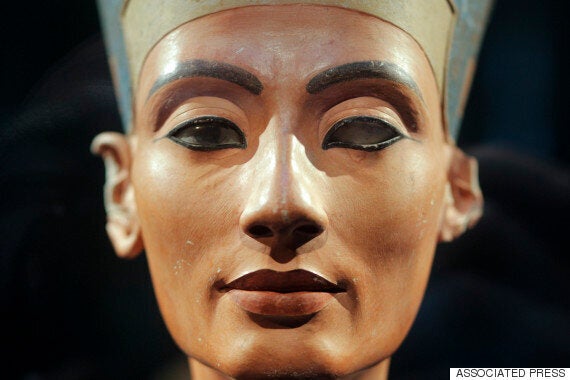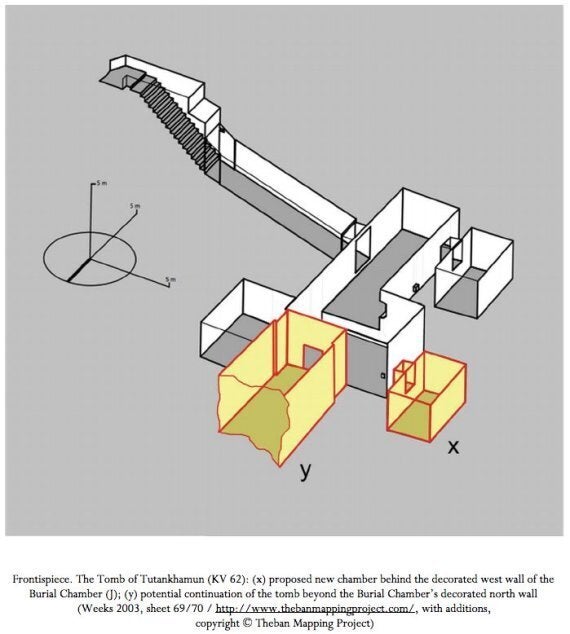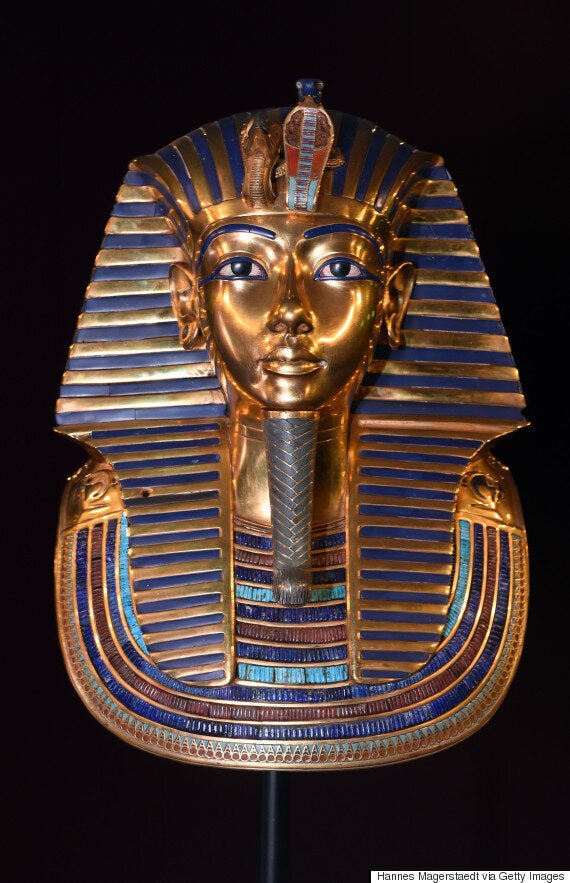A British archaeologist may have solved one of the most enduring mysteries of ancient Egypt.
The grave of Queen Nefertiti – believed by many to be the mother of the boy King Tutankhamun – has never been found.
But Nicholas Reeves believes he could have located the final resting place of the infinitely powerful royal – just yards from the tomb of her alleged son.

Has the lost grave of Queen Nefertiti finally been found?
Reeves, an archaeologist with the University of Arizona, has identified two bricked up “ghosts” of doorways after studying digital scans of the walls of Tutankhamun’s tomb in the Valley of the Kings, Luxor.
In a paper entitled The Burial of Nefertiti?, Reeves writes that he believes one of the doors leads to a storage chamber, while the other may well contain “the undisturbed burial of the tomb’s original owner – Nefertiti.”
SEE ALSO:
- Who Could It Be? Alexander The Great-Era Skeleton 'Was A Mortal Worshipped By Society'
- Mesopotamian 'Moon God' Monument Older Than Stonehenge & The Great Pyramid Discovered In Israel
- Mystery Of Hundreds Of Yellow Orbs Found In Mexico's Temple Of The Feathered Serpent
Reeves believes this “tomb-within-a-tomb” came about because the royal court was thrown into crisis when the young King died, and with no tomb dug for the Pharaoh’s use, Nefertiti’s existing grave was opened up and enlarged to include a further chamber. [Indeed many archaeologists have remarked upon the modest size of the King's burial chamber.]

Nicholas Reeves believes the Queen's tomb is actually contained in a hidden offshoot from King Tutankhamun’s (Y)
Tomb robbers plundered the space in the months following the boy King’s death, though Reeves believes Nefertiti’s chamber was “already forgotten, perhaps, and more likely, the robbers simply had insufficient time to investigate, choosing to focus instead on those abundant riches readily to hand.”
Three-and-a-half thousand years later the now famed archaeologist Howard Carter unearthed the King’s majestic tomb, but, says Reeves: “he lacked the technology to see beneath the tomb’s painted walls.
“Accepting the oddly positioned rock-cut niches as evidence that the Burial Chamber’s walls were completely solid, he brought his search to a close – wholly unaware that a more significant find by far may have been lying but inches from his grasp.”

The burial mask of Egyptian Pharaoh Tutankhamun
Tutankhamun died in mysterious circumstances in 1323 BC at the age of 19. Alongside the king's mummified body were hundreds of objects placed in the tomb to help Tutankhamun in his afterlife.
The Economist reports Reeve’s theory would be easy to test using non-invasive techniques including radar scans to reveal any hollows.
Reeves told the magazine: “Each piece of evidence on its own is not conclusive, but put it all together and it’s hard to avoid my conclusion.
“If I’m wrong, I’m wrong, but if I’m right this is potentially the biggest archeological discovery ever made.”
Referring to Reeve’s claims, Joyce Tyldesley, a senior lecturer in Egyptology at the University of Manchester, told the Times: “It would not be surprising if the tomb had been intended to have additional rooms.
“I would be very surprised if this tomb was built to house the original, or first burial of Nefertiti, as it seems to me that it is highly likely that she died during her husband’s reign and so would have been buried at Amarna, the city purpose-built by Akhenaten in Middle Egypt.
“Whether or not her body was subsequently transported to Thebes by Tutankhamun, who may have been her son, is difficult to say. There is good evidence that he did move some of the Amarna royal bodies.
“But I would have expected her to be buried somewhere in the Western Valley, rather than in the centre of the Valley of Kings.”